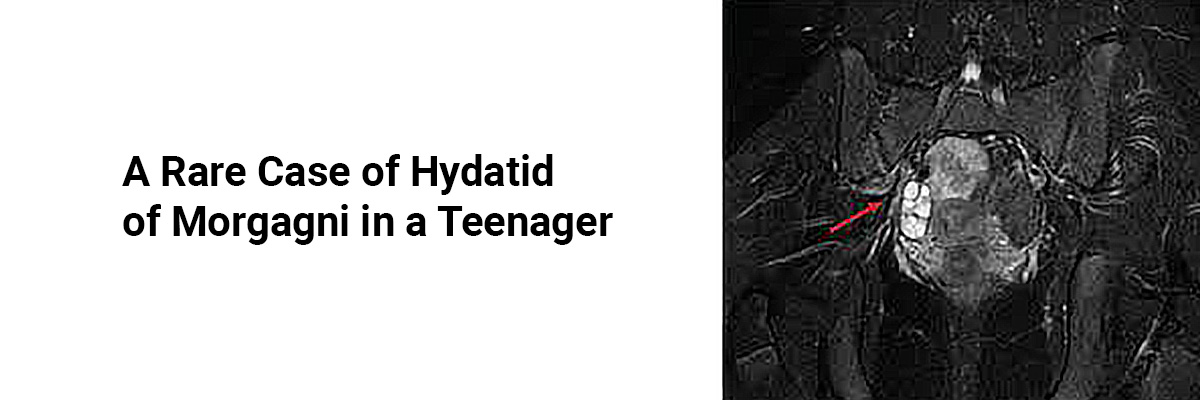
A Rare Case of Hydatid of Morgagni in a Teenager
A 13-year-old post-menarchal girl presented to the emergency department with acute abdominal pain, nausea, and stranguria.
She was an athlete who had recently trained intensively. Her medical history was unremarkable, with a normal menstrual period two weeks prior and no prior gynecological issues.
Blood and urine tests were normal, showing a white blood cell count of 7,170/mm³, neutrophils at 44%, and a PCR of <0.5 mg/dL.
On examination, she had right-sided abdominal pain and tenderness. Initial abdominal ultrasound and Doppler studies of adnexal blood flow showed no abnormalities. An MRI performed 72 hours after admission suspected an adnexal issue, revealing fluid in the Douglas cavity and asymmetrical contrast enhancement in the right ovary, which was more pronounced in the later phase. The MRI also identified a 360° twist of the distal segment of the right fallopian tube.
A surgical detortion of the right fallopian tube was subsequently undertaken. Laparoscopy was employed for cystectomy and detorsion of the fallopian tube while preserving the adnexa. The right ovary was unaffected and appeared normal.
The postoperative course was smooth, and the patient was discharged on the second day. At a two-month follow-up, she reported positive feedback about the diagnostic and treatment process.
Pathological examination confirmed torsion of the hydatid of Morgagni.
Hydatid of Morgagni arises from the fimbriae of the fallopian tubes and is usually smaller than paraovarian cysts. Isolated torsion of these hydatids is rare, with an incidence of 1 in 1.5 million. Evidence suggests that in adolescents, hydatids are involved in about 26% of adnexal torsion cases.
These cases predominantly present with abdominal or pelvic pain, often related to physical activity, and are usually managed with laparoscopic surgery. Early surgical intervention is crucial to prevent complications and preserve fertility.
Source: Bollettini T, Molinaro F, Benigna A, et al. Case Reports in Obstetrics and Gynecology. 2024;2024(1):4559795.








Please login to comment on this article